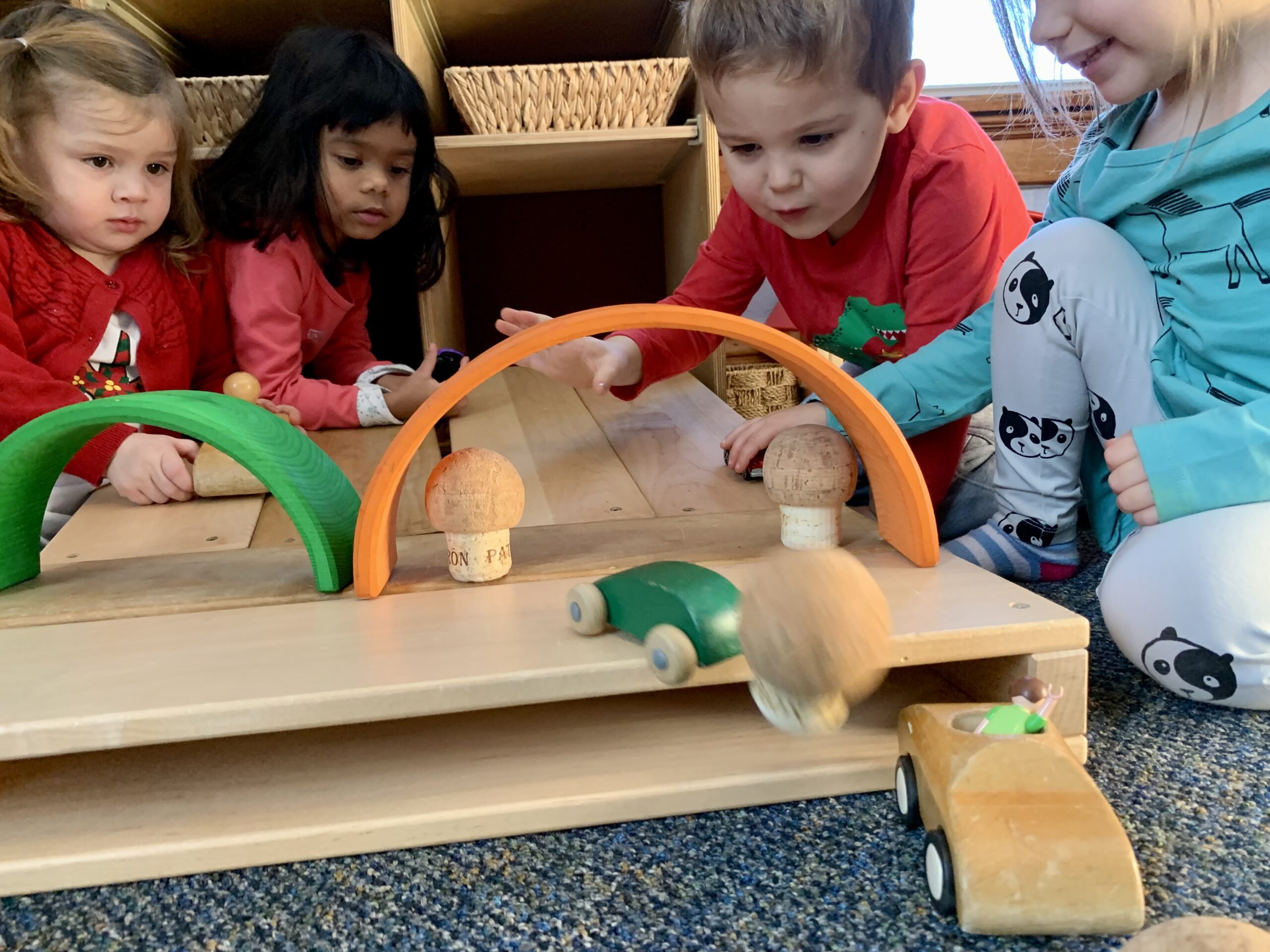
Ramping Up Some Fun
"Get ready . . . there's a big crash coming!
I know this voice. It’s coming from four-year-old James, and it's the voice of an early engineering explorer about to attempt something slightly risky and, most likely, destructive.
"Come on, James, DO it!" commands Nora, giggling with excitement and anticipation.
"Ready . . .? " James asks, pausing for dramatic effect. Then he shouts GO! and shoves the biggest, heaviest truck in our play area down the block ramp that he has constructed.
When I glance up to see what's going on, I see the truck heading straight for the "forest" of cork trees and the crowd of wooden block people at the bottom of the ramp.
The expression on James's face as he orchestrates the collision is priceless: a mixture of mischief, excitement, and scientific curiosity.
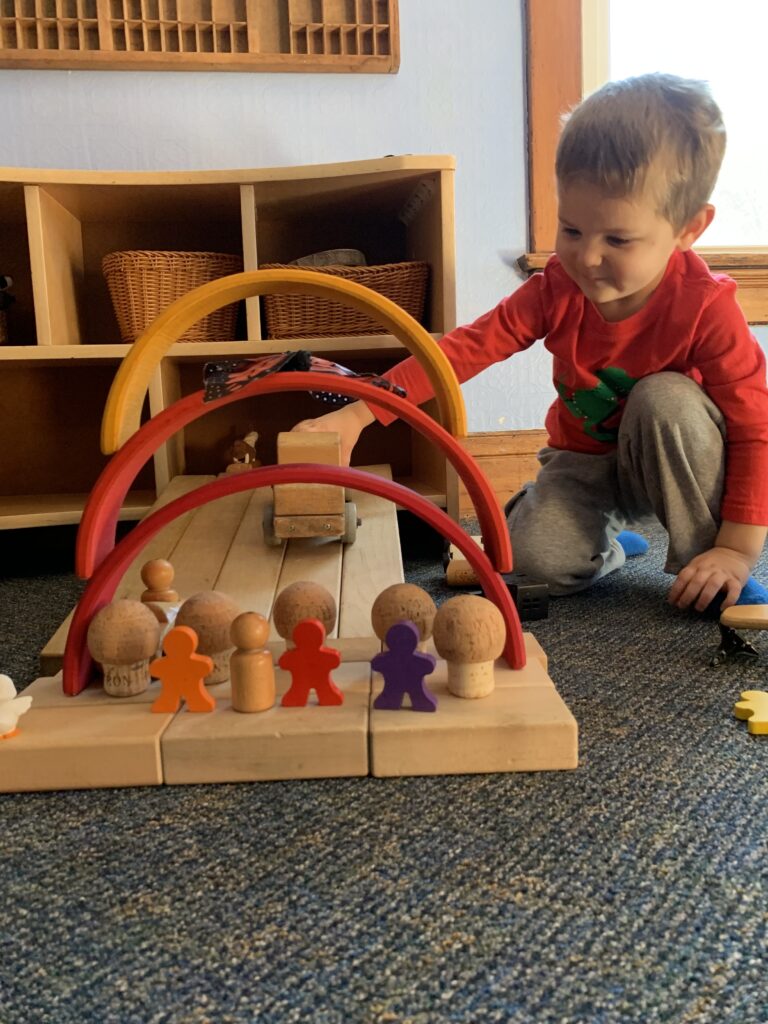
As the truck gains momentum, it crashes through the forest of cork trees and sends the wooden block people flying. I hear squeals of delight emanating from the crowd of young engineers.
"That was cool!" exclaims Nora. "Let's do it again!"
What’s really cool is the child-led learning that's taking place, fueled by the children's curiosity and creativity.
When we give children the time and the materials they need to experiment and interact with different materials and forces, we create rich learning environments.
In preschool classrooms, the block area is a treasure trove of creativity and learning. Among the various materials available, ramps stand out as one of the best ways to encourage young children to explore early engineering concepts and develop STEM skills through play.
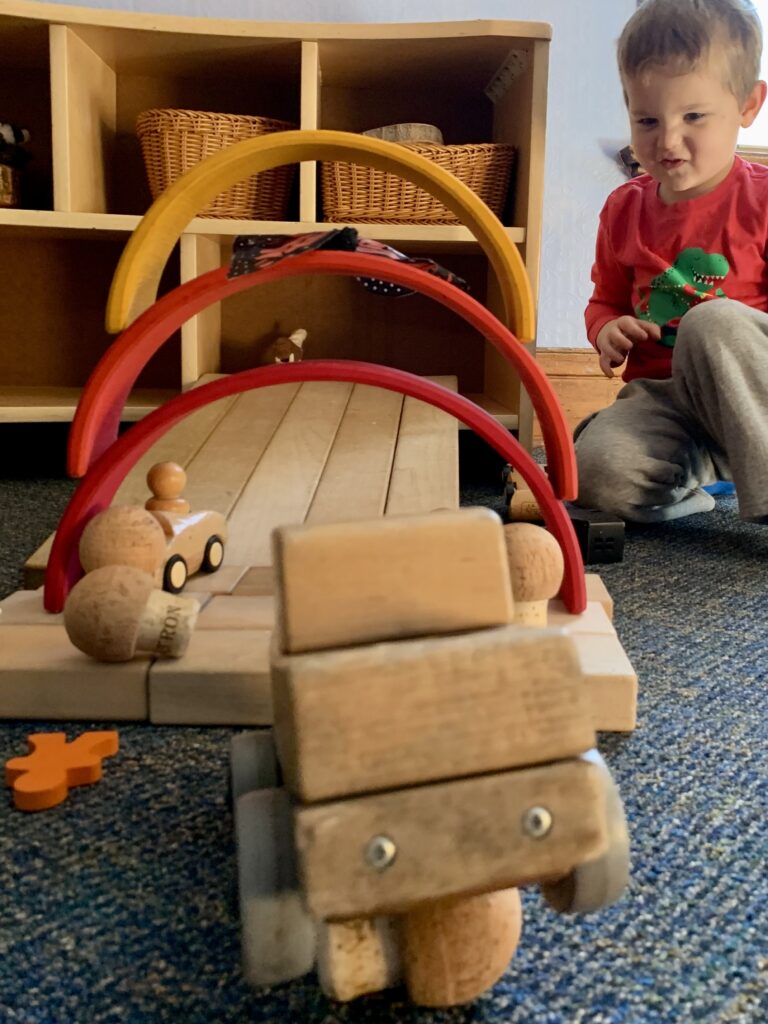
This morning's play with ramps and inclines is a perfect example of STEM learning.
As the children build ramps, push cars, and roll trucks, their hands-on investigations are helping to lay the foundation for a fundamental understanding of STEM disciplines such as physics, engineering, and math.
As they construct different ramp designs, they experiment with angles, heights, and surfaces. This hands-on investigation helps solidify their understanding of gravity, motion, and balance.
When a toy car rolls down a ramp, they see the principles of physics in action and gain a firsthand understanding of cause and effect.
When children design structures, explore the ways that different objects interact with these structures, and then make structural adjustments to change the nature of these interactions, this is engineering!
As the children draw conclusions about how their block objects move through space, make predictions, and observe what happens to see if their predictions are correct, they are collecting and analyzing data—just like real scientists and engineers!
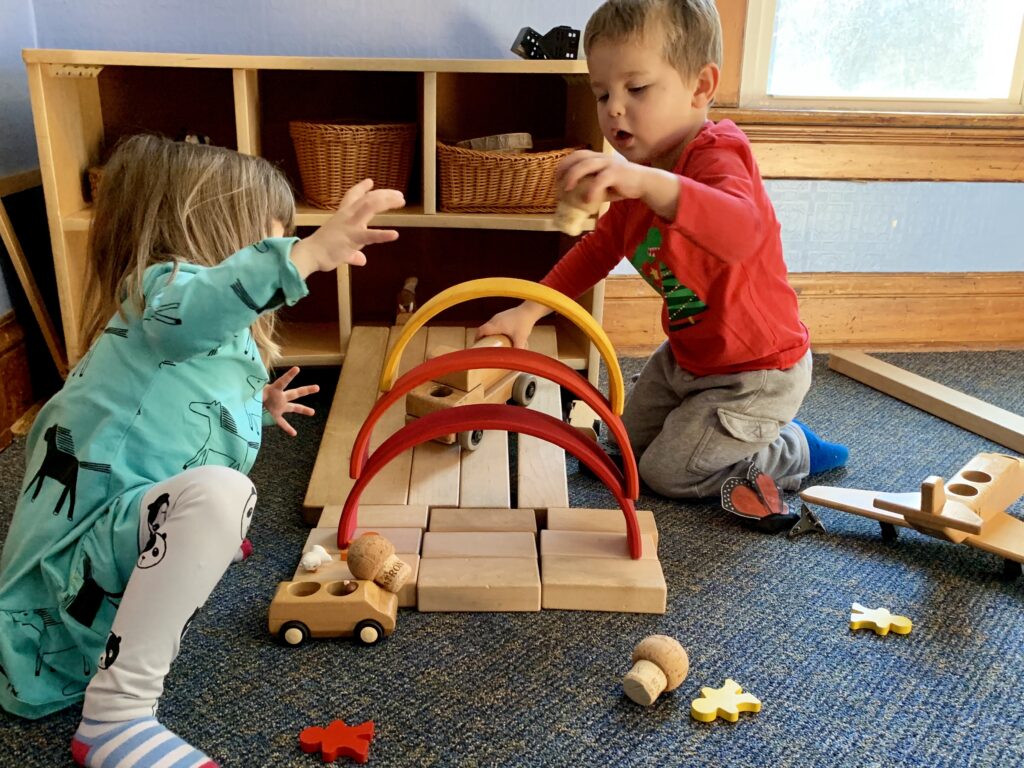
James and Nora continue to experiment with different cars and materials. These two don’t usually hang out together, so it's interesting to listen to them as they problem-solve and play as a team.
They are working toward the same goal: sharing ideas, communicating, and collaborating. Nora is adding elements of pretend play and creative storytelling, and James is intrigued by her contributions.
As they integrate Nora's ideas into a storyline that drives their actions, James shifts into a different gear. He becomes more deliberate and thoughtful, rolling cars of different sizes and styles down the ramp to see what happens.
The goal is still to knock down trees, people, and homes, but Nora's storyline has added a different dimension to their play. I listen in as they problem-solve their way to a new understanding of how the world works.
Together, these two budding engineers design and redesign their investigation based on their findings as they observe how the different cars are affected by the forces of motion, speed, and gravity. They begin to test different scenarios to produce different outcomes.
These playful moments of friendship and investigation also build the children's social-emotional skills. Cooperative play fosters the development of skills such as sharing, negotiation, communication, reasoning, and self-regulation.
As Nora and James focus more intently on their investigations, they become oblivious to the distractions of the classroom. It's clear that they've got a play buzz going on!
So what exactly is a play buzz? It's a moment during free play when all is good, all is right, all needs are being met, and all of the children are learning.
A play buzz is a teacher's dream—and it's easy to recognize one when it happens. These are the moments when children are deeply engaged in learning, exploring, and brain-building experiments. The moments when you remember why you love teaching—and when you grab your camera to document the cognitive and social-emotional development that is happening right in front of your eyes.
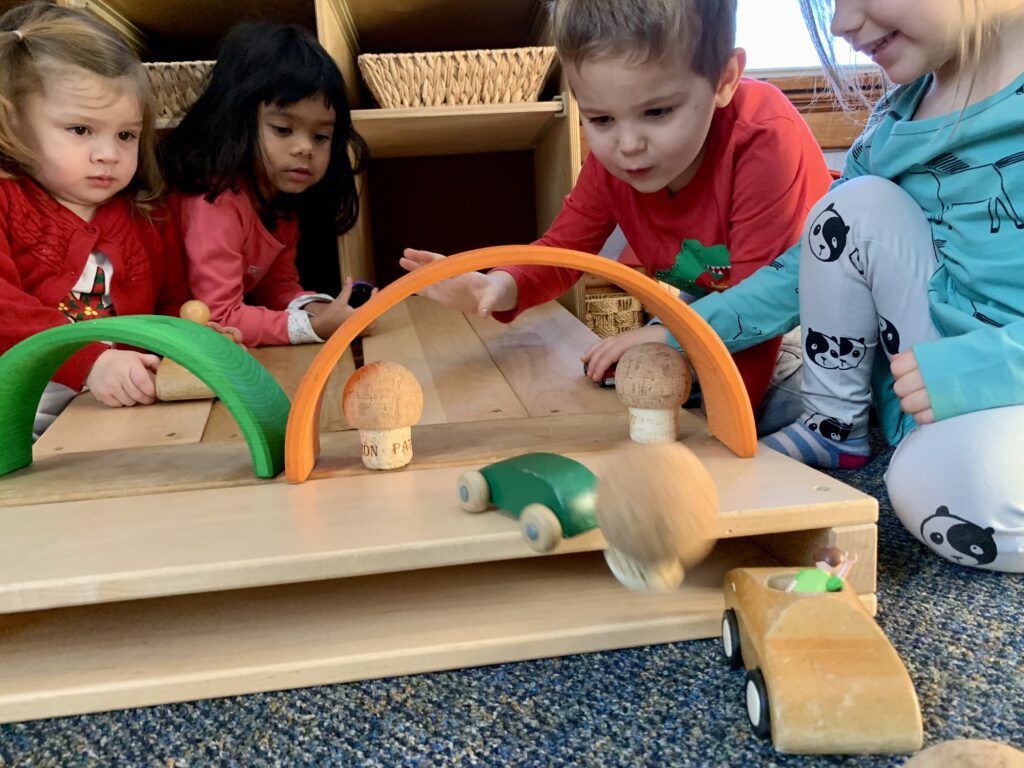
Our block ramp experiments have attracted the attention of the whole gang. Suddenly, we have a room full of engineers!
We have rolling cylinders, cause-and-effect experiments, teamwork, and so much more. Playing with ramps in preschool block areas is more than just a fun activity: it's a way for young children to develop rudimentary early engineering and STEM skills.
By encouraging exploration, problem-solving, collaboration, and creativity during block play, we empower today's early learners to become the innovators of tomorrow!